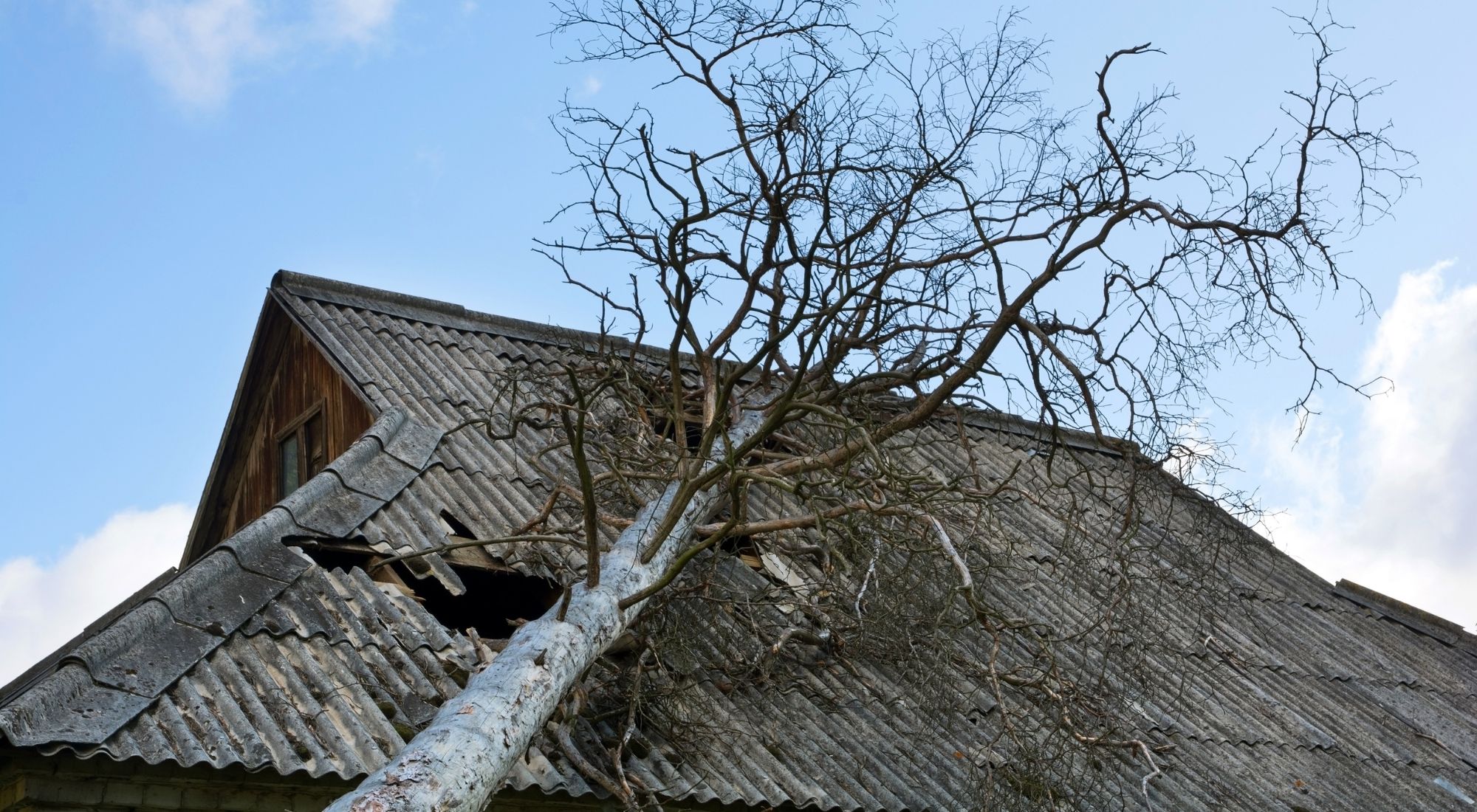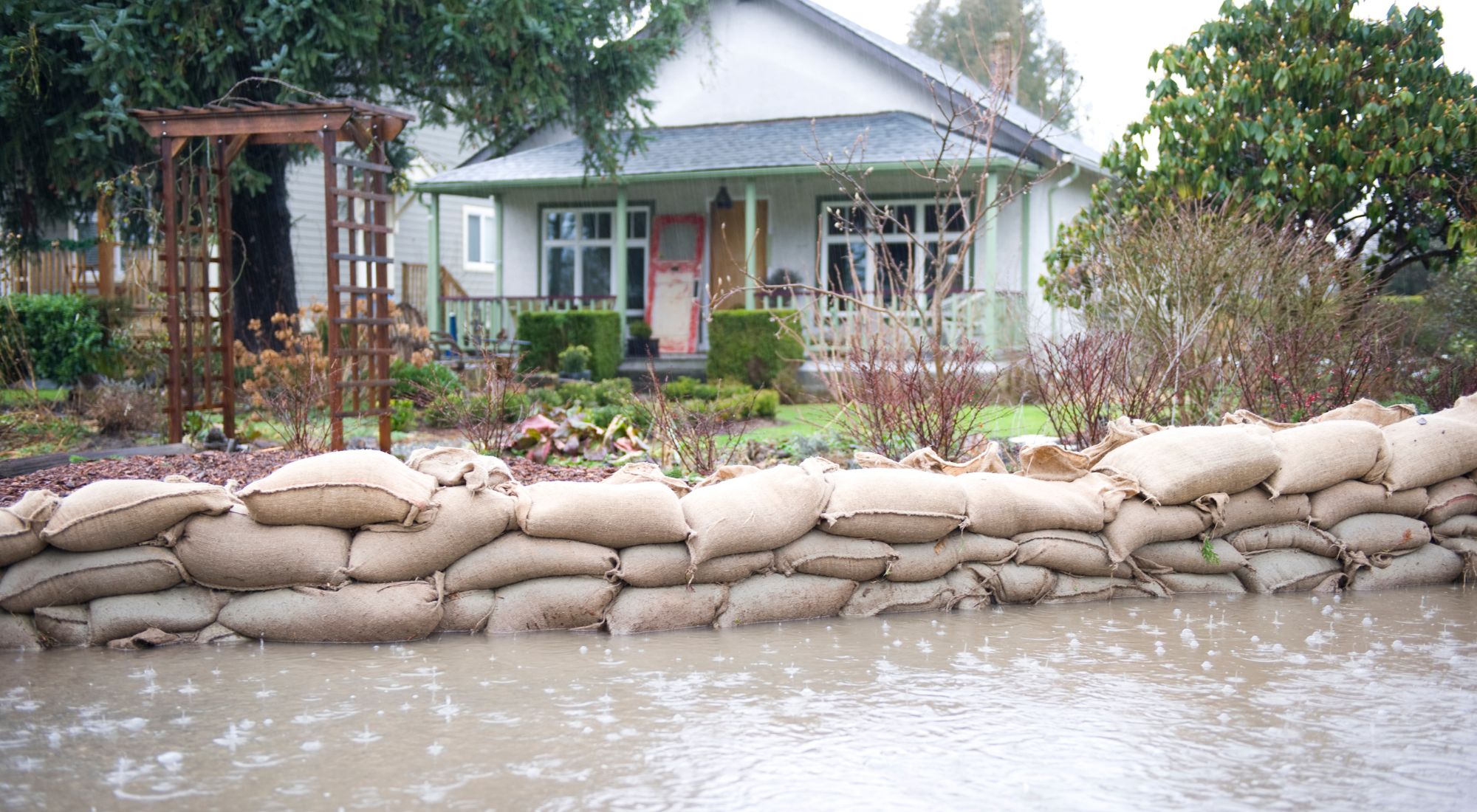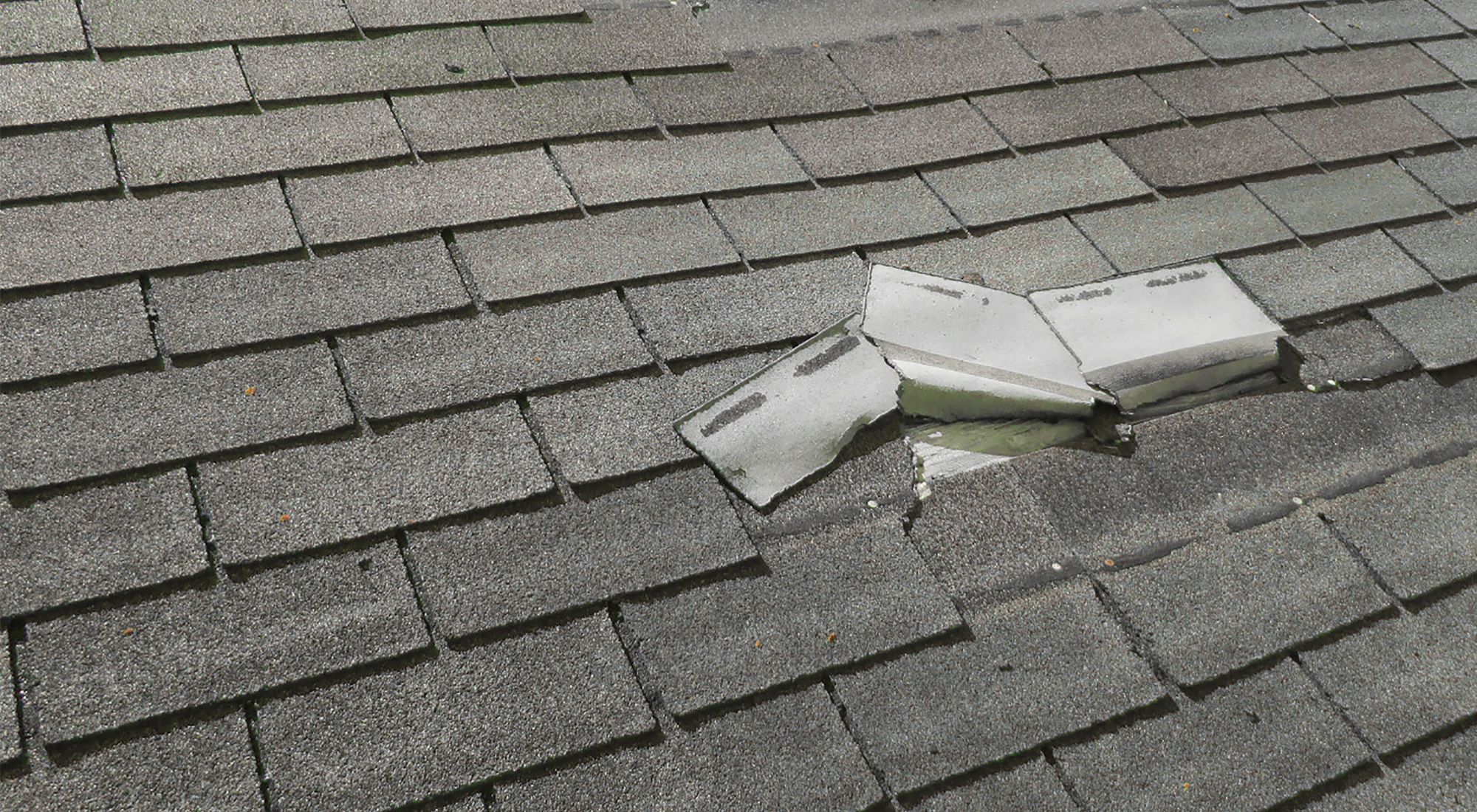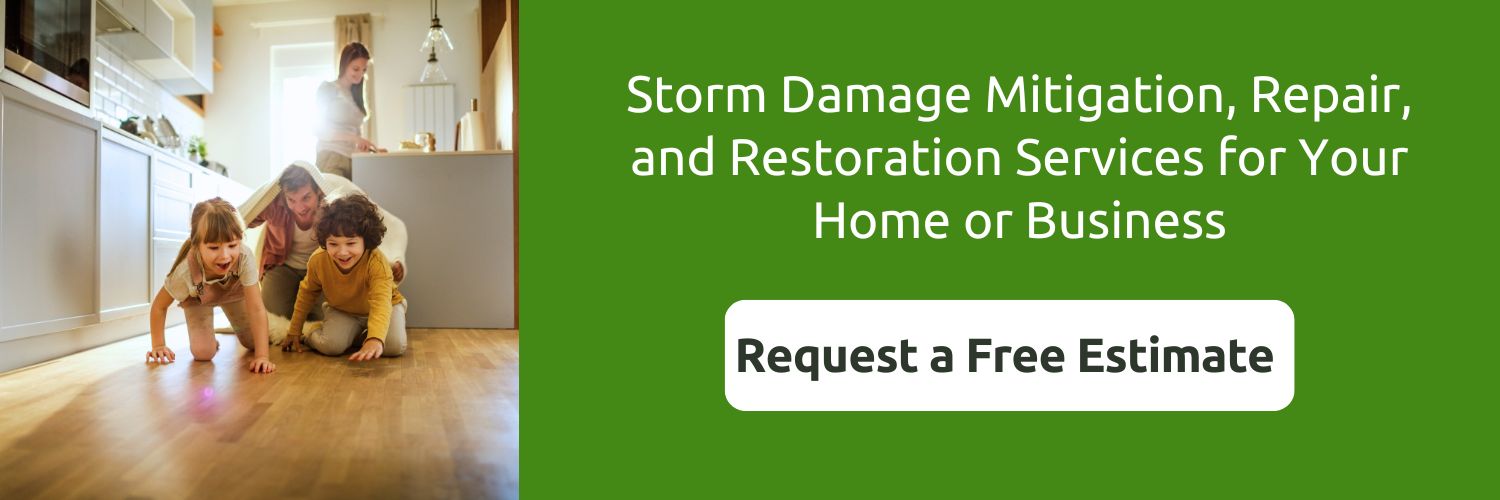Would you be at a loss to know what actions to take if you woke up to storm damage in your home? Do you think you’d be unable to keep your wits enough to perform the essential activities necessary during an emergency?
Learning ahead of time what to do after storm damage will help you avoid such a scenario. If you know what to expect, you can be sure to do all that is required of you to restore your home to its safe, unblemished state.
Pure Environmental would like to let you know how you can identify storm damage and what to do if you find yourself responsible for restoring your home after a storm.
Table of Contents
- What Is Considered Storm Damage?
- What To Do If Your Home Is Damaged By a Storm
- Restoring Your Home After Storm Damage: 6 Steps We Recommend You Take
- Frequently Asked Questions About What To Do After a Storm Damages Your Home
- Pure Environmental: The Preferred Storm Damage Recovery Contractor in the Pacific Northwest
What Is Considered Storm Damage?
The term “storm damage” comprises many different things, including:
- Water damage
- Wind damage
- Hail damage
- Impact damage from blown debris or fallen trees
- Ice and snow damage
- Flood damage
If your home has sustained any of these kinds of damage, you will likely need the help of repair and restoration professionals. Contact Pure Environmental today to learn how we can serve you in the process of rehabilitating your home.
What To Do If Your Home Is Damaged By a Storm
The first and most important thing you must do is remain calm and stabilize the scene to preserve everyone’s safety. Once the danger has passed and everyone is safe, then you can focus on the damage.
While the people of Tacoma and the Pacific Northwest are often known for being chill, the weather often isn’t! Many Tacoma homes — situated along Puget Sound and its many rivers and distributary streamlets — are susceptible to flooding, especially in the winter during peak rain season. Portland is also especially prone to flooding. For this reason, people living in these areas should be well-versed in the following procedure for addressing storm damage to a home.

Restoring Your Home After Storm Damage: 6 Steps We Recommend You Take
Step #1: Prevent Problems From Getting Worse
Taking precautionary measures to prevent worsening damage to your home is called mitigation. For instance, the following actions might help prevent further damage, depending on your situation:
- Use a sump pump to remove water from flooding.
- Use fans to dry wet carpets to prevent mold.
- Board up broken windows.
- Put a tarp over any roof damage.
Some measures can be taken before a storm to prevent damage in the first place, including:
- Trimming trees and shrubs and getting rid of dead or dying trees
- Cleaning debris from your yard
- Covering windows to guard against flying debris
- Clearing clogged gutters and downspouts
- Reinforcing garage doors
Above all, however, be sure no action you take will compromise anyone’s safety. Further damage to your home is preferable to loss of life.
Step #2: Assess and Document the Damage
When it is safe, assess the damage to the interior and exterior of your home. Do so with caution, as structural damage might not be immediately obvious. Take pictures to provide evidence to your insurance company. They will determine what damages are covered. If you have pictures of your home before the storm took place, these are good for comparison with the pictures of damage.
Note any changes, big or small, caused by the storm, such as:
- Broken doors or windows
- Exposed power lines
- Destruction of personal items
- Leaks or holes in the roof
- Broken shingles, vents, or gutters
- Moisture or fire damage
- Basement flooding
In addition to photographic evidence, keep a record of any costs that you incur because of the damages, such as hotel and other temporary living expenses.
Step #3: Contact Your Insurance Provider
After you have collected photographic evidence of the damages and made appropriate documentation, it is time to file an insurance claim. Chances are much of your costs will be covered.
Your insurance provider will guide you through the process of making a claim and discuss which damages can be covered based on your policy. They can also provide a list of local providers of emergency mitigation services, such as Pure Environmental, who can help you restore your home.
Step #4: Contact Your Mortgage Financing Company
Ask your mortgage financing company about any available relief options for homeowners who have suffered loss due to storm damage. If restoration costs prevent you from paying your mortgage, ask about mortgage forbearance.
Forbearance allows you to make partial payments or to stop making payments completely for a set period of time until you can get back on your feet. This period is usually six months but can be extended in some cases. If you are granted forbearance, you can avoid late fees and experiencing a drop in your credit score.
Step #5: Check Your Eligibility for Disaster Aid
If the following criteria apply to you, you may be eligible for disaster assistance from the Federal Emergency Relief Agency:
- You are a U.S. citizen, non-citizen national, or qualified non-citizen.
- You have a valid Social Security number.
- You can verify that the damaged home is your primary residence.
- Your insurance (or another program) does not cover the costs incurred by the disaster.
The due date for applying for relief assistance is on FEMA’s home page.
Step #6: Contact a Trusted Repair and Restoration Contractor
Once you’ve completed the above steps, you can begin looking for a good repair and restoration contractor to help you rebuild. You might not find one contractor who can perform all repairs, but Pure Environmental offers a wide variety of services to ensure your home restoration is as streamlined as possible.

Frequently Asked Questions About What To Do After a Storm Damages Your Home
Does Homeowners Insurance Cover Storm Damage?
Storm damages that may be covered by homeowners insurance include:
- Damage caused by a neighbor’s tree falling on your house
- Appliances and electronics ruined by power surges
- Loss of refrigerated food
- Burst pipes due to freezing, as long as your home is properly heated
- Damaged roof or siding
- Damage caused by water originating inside the home or coming through a storm-created opening
Homeowners insurance does not cover damage caused by floods or landslides. But you can purchase flood insurance through the National Flood Insurance Program and ask your insurance agent about other insurers who might cover landslide damages.
Homeowners insurance will not cover damage due to wear and tear, so it’s critical that you provide evidence that the damage was caused by a storm.
How Do I Know If I Have Storm Damage?
Storm damage is not always obvious. You might have unseen water damage from flooding or roof damage that has allowed mold to begin growing in your walls and/or ceiling. If you are unsure, you may need to schedule a home inspection. Then you will know specifically what to do after storm damage.
How Do I Choose the Right Repair and Restoration Contractor?
Do plenty of research about local restoration contractors and get referrals from trusted friends and businesses. The contractor you hire should have the necessary credentials, insurance, and licenses to help you mitigate, repair, and restore storm-damaged parts of your home.
Be wary of “storm chasers” and out-of-town contractors soliciting services. Since the need is high and local contractors are often swamped with work after a devastating storm, scammers take advantage of the situation by offering quick labor at unbeatable prices.
Here are some tips for avoiding storm chasers:
- Consult the Better Business Bureau for companies with the Accredited Business Seal.
- Distrust high-pressure sales pitches that promise their deals only if you hire them right away. A trustworthy business gives you time to think carefully before signing a contract.
- If a salesperson comes to your door, ask for identification proving they are permitted to solicit.
- Read any documentation very carefully before signing. No contractor should be given the right to your insurance claim. Only pay directly, preferably with a credit card, which has built-in fraud protection.
- Don’t agree to give a large sum of money to the contractor without having a signed contract in place outlining the terms of payment.
- Monitor the condition of your roof, siding, gutters, and other exterior areas often. A storm chaser might note conditions not caused by a storm and offer to work on them. If you are already thoroughly aware of your home’s condition, you won’t be tricked into paying someone unnecessarily for work.
Pure Environmental is a trusted professional home restoration company that will act in your best interests and advise you throughout the whole process about the benefits of different services and what is at stake in taking specific actions to restore the various parts of your home.
Will Storm Damage Repair and Restoration Contractors Work With My Insurance?
Yes, but traditional remodeling contractors are not skilled and experienced in negotiating with insurance companies on restoration projects. As a result, this service performed by most companies might cost extra.
Pure Environmental is different. We will work with your insurance adjustor competently, advocating for you to restore your home to its original splendor.

Pure Environmental: The Preferred Storm Damage Recovery Contractor in the Pacific Northwest
If you want the best home restoration service in the Portland and Tacoma areas, don’t hesitate to get in touch with Pure Environmental. Our clients rate us as a 5-star business for many reasons, among which are our professionalism and expertise, our prompt and high-quality work, and our commitment to the best interest of the client.
We use innovative technologies and an environmentally friendly approach to ensure that your home restoration project is done as thoroughly and safely as possible.
In addition to emergency mitigation, we will help you with all your repair and remodeling needs. Once our team surveys the damage, they will provide you with an estimate of the cost for services and work with your insurance company to facilitate your timely home restoration.
If your home has been damaged by fire or water as a result of a storm, we can also provide our PurAyr treatment to purify the air and decontaminate surfaces of harmful contaminants such as mold and volatile organic compounds.
Restoring your home after a storm can cause stress and confusion. Let us carry the burden with you. Contact us today to allow us to offer you the trusted, high-quality service you deserve.
Recent posts
- Maximize Comfort & Savings: Make Your Attic More Energy Efficient Today
- How To Prevent Water in Your Crawl Space: Proven Strategies To Prevent Water Damage
- Fresh and Clean: How To Disinfect the Air in Your Home Naturally
- Pros and Cons of Heat Treatment for Bed Bugs: Things To Consider When Reviewing Your Options for Remediation
- How To Get Rid of Pet Odor in Your House
Recent Posts
- Maximize Comfort & Savings: Make Your Attic More Energy Efficient Today
- How To Prevent Water in Your Crawl Space: Proven Strategies To Prevent Water Damage
- Fresh and Clean: How To Disinfect the Air in Your Home Naturally
- Pros and Cons of Heat Treatment for Bed Bugs: Things To Consider When Reviewing Your Options for Remediation
- How To Get Rid of Pet Odor in Your House
